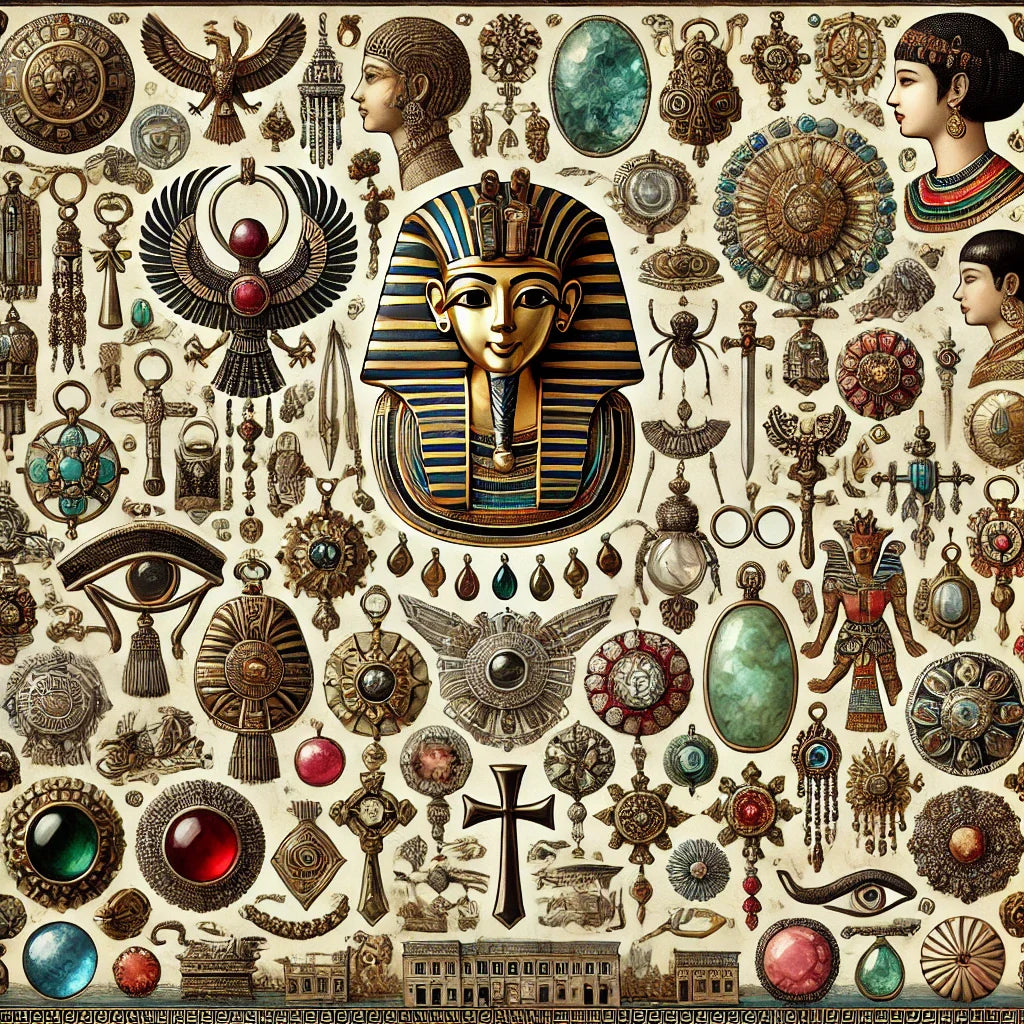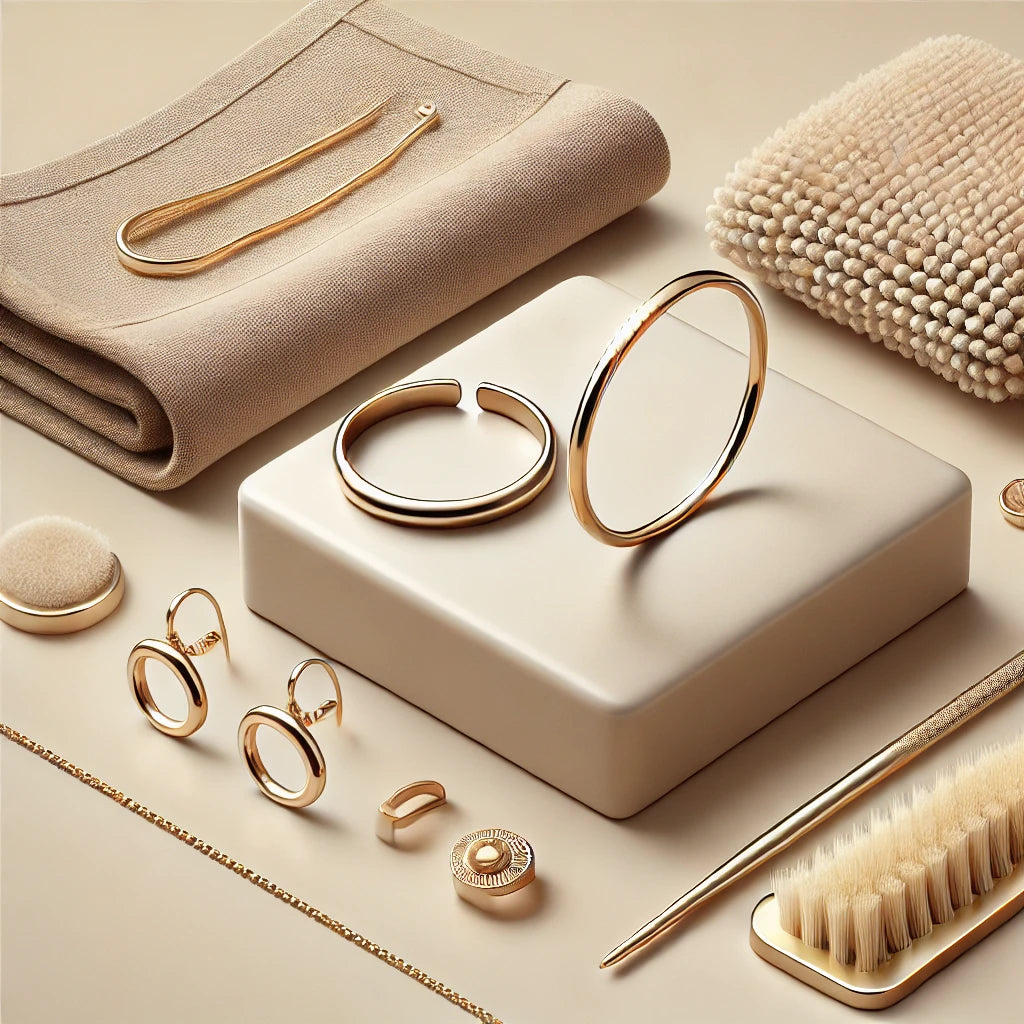Jewelry has been a fundamental part of human culture for thousands of years, serving as a marker of status, a symbol of beliefs, and a testament to artistic and technological advancements. This blog post explores the historical significance of jewelry across different cultures and periods, highlighting its role and impact on society.
Jewelry in Ancient Civilizations
Egypt
Symbolism of Life and Death
In ancient Egypt, jewelry was deeply symbolic, representing themes of life, death, and the afterlife. The ankh, a symbol of life, and the scarab, symbolizing rebirth, were commonly featured in jewelry pieces. Egyptians believed that these symbols provided protection and guidance in both life and death.
Use of Gold and Lapis Lazuli
Gold was highly valued in ancient Egypt for its association with the sun and immortality. It was used extensively in jewelry, often paired with lapis lazuli, a deep blue gemstone symbolizing royalty and divine favor. The combination of these materials created striking and meaningful adornments.
Greece
Representation of Wealth and Status
In ancient Greece, jewelry was a symbol of wealth and social status. Wealthy individuals adorned themselves with intricate gold pieces, often depicting gods, animals, and mythological scenes. These pieces showcased not only their financial standing but also their cultural sophistication.
Introduction of Gemstones
The Greeks were among the first to incorporate a wide variety of gemstones into their jewelry. They used stones like emeralds, pearls, and garnets, believing that each gemstone possessed unique powers and properties. This practice added a new dimension to jewelry, combining beauty with mystical significance.
Rome
Functional and Decorative Uses
Roman jewelry served both functional and decorative purposes. Signet rings, for instance, were used to seal documents, while fibulae (brooches) secured clothing. Additionally, Romans adorned themselves with necklaces, bracelets, and earrings, reflecting their love for opulence and artistry.
Spread of Jewelry Across the Empire
The expansion of the Roman Empire facilitated the spread of jewelry styles and techniques across Europe, Africa, and Asia. This cultural exchange led to a fusion of styles and the introduction of new materials, enriching the diversity of Roman jewelry.
Jewelry During the Middle Ages
Europe
Religious Symbolism and Amulets
During the Middle Ages, jewelry in Europe was heavily influenced by religion. Crosses, religious medallions, and amulets were common, serving as symbols of faith and protection. These pieces often featured intricate designs and were believed to offer spiritual benefits.
Guild Regulations and Craftsmanship
Jewelry making in medieval Europe was regulated by guilds, which maintained high standards of craftsmanship. These guilds ensured that only skilled artisans produced jewelry, leading to the creation of exquisite and durable pieces that have stood the test of time.
Asia
Influence of Royalty and Aristocracy
In medieval Asia, royalty and aristocracy played a significant role in the development of jewelry. Kings, queens, and nobles commissioned elaborate pieces that showcased their power and wealth. These pieces often featured precious stones, gold, and intricate designs, reflecting the region’s rich cultural heritage.
Diverse Materials and Techniques
Asian jewelry from this period displayed a wide range of materials and techniques. Artisans used jade, pearls, and coral, among other materials, to create unique and beautiful pieces. Techniques such as enameling, filigree, and granulation were commonly employed, demonstrating the region’s advanced craftsmanship.
Renaissance to Modern Day
Renaissance Europe
Revival of Classical Styles
The Renaissance period saw a revival of classical styles from ancient Greece and Rome. Jewelry designs incorporated mythological themes, intricate engravings, and classical motifs. This era also marked a renewed interest in symmetry and proportion, resulting in elegant and balanced pieces.
Innovations in Gem Cutting
Advancements in gem cutting during the Renaissance allowed for more precise and intricate designs. These innovations enhanced the brilliance and beauty of gemstones, making them more desirable and leading to the creation of spectacular jewelry pieces.
Industrial Revolution
Democratization of Jewelry
The Industrial Revolution brought significant changes to the jewelry industry. Mass production techniques made jewelry more accessible to the general public, democratizing what was once a luxury reserved for the wealthy. This period saw a rise in the popularity of more affordable materials and designs.
Advent of Costume Jewelry
The late 19th and early 20th centuries witnessed the advent of costume jewelry. These pieces, made from less expensive materials, allowed people to follow fashion trends without the high cost. Costume jewelry became a staple in women's wardrobes, reflecting the changing social dynamics of the time.
20th Century
Art Nouveau and Art Deco Movements
The 20th century introduced the Art Nouveau and Art Deco movements, which had a profound impact on jewelry design. Art Nouveau pieces featured flowing lines, natural motifs, and a focus on artistic expression. In contrast, Art Deco emphasized geometric shapes, bold colors, and modernity, leading to striking and innovative designs.
Contemporary and Designer Jewelry
The latter part of the 20th century and into the 21st century has seen a surge in contemporary and designer jewelry. Designers like Tiffany & Co., Cartier, and Bulgari have created iconic pieces that blend traditional craftsmanship with modern aesthetics. This period also saw the rise of bespoke jewelry, allowing for highly personalized and unique creations.
Cultural and Social Impacts of Jewelry
Symbolism in Jewelry
Marriage and Commitment
Jewelry has long been a symbol of marriage and commitment. Engagement rings and wedding bands are universally recognized symbols of love and partnership. These pieces often carry deep personal and cultural significance, marking one of the most important events in a person’s life.
Power and Status
Throughout history, jewelry has been used to signify power and status. Royal crowns, scepters, and ceremonial pieces are prime examples. In modern times, luxury watches and high-end jewelry continue to serve as indicators of social standing and success.
Jewelry as Investment
Value Retention
Jewelry, particularly pieces made from precious metals and gemstones, is often considered a good investment. These items tend to retain their value over time and can even appreciate, making them a stable and tangible asset.
Collectible Pieces
Certain jewelry pieces, especially those with historical significance or from renowned designers, become highly collectible. These pieces often fetch high prices at auctions and are sought after by collectors and enthusiasts worldwide.
Jewelry in Fashion
Influences on Modern Fashion
Jewelry plays a crucial role in modern fashion, often setting trends and complementing clothing styles. Designers regularly incorporate jewelry into their collections, influencing the way people accessorise and express themselves through fashion.
Iconic Jewelry Pieces and Their Designers
Iconic jewelry pieces, such as the Cartier Love Bracelet or the Tiffany & Co. Heart Pendant, have left an indelible mark on the fashion world. These designs and their creators have become legendary, shaping the industry and inspiring future generations of jewelry designers.
In essence, the historical significance of jewelry is vast and multifaceted. From ancient civilizations to modern times, jewelry has played a crucial role in reflecting cultural values, social status, artistic expression, and technological advancements. Understanding this history allows us to appreciate the depth and meaning behind the jewelry we wear today.



